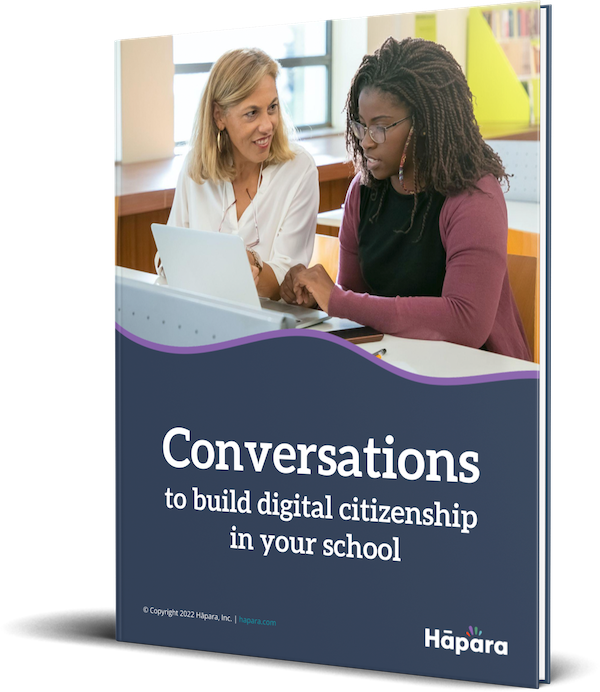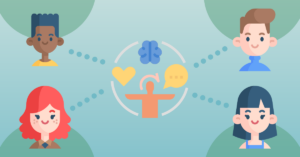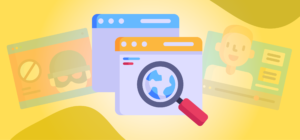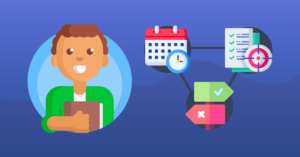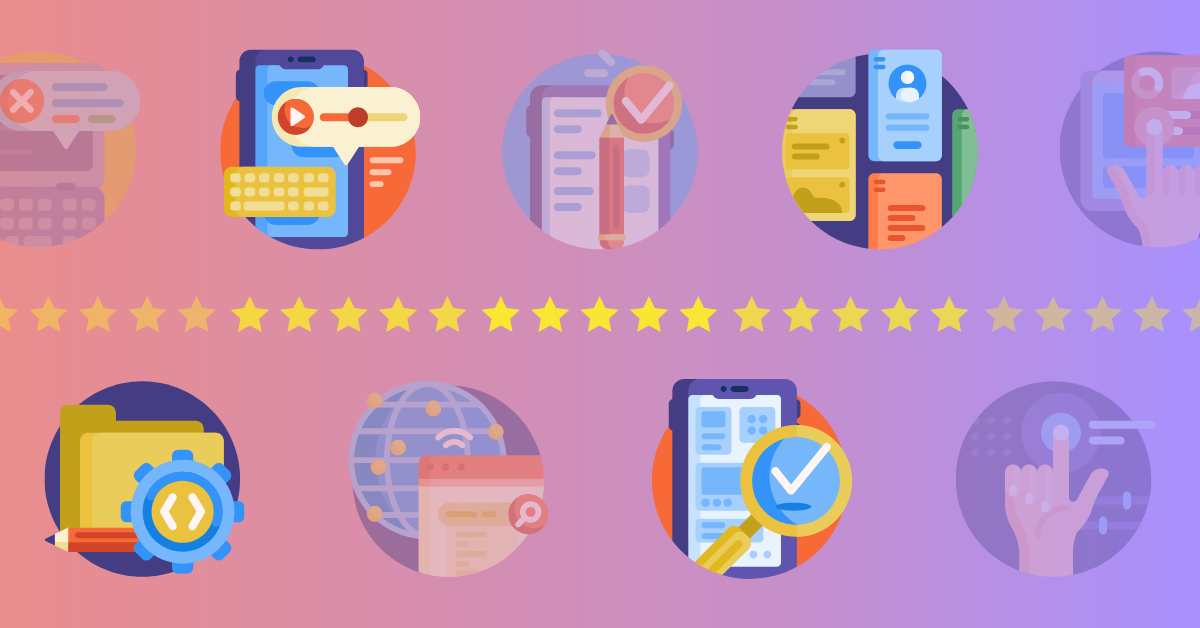
![]() Listen to an audio version of this post:
Listen to an audio version of this post:
Kids and teens today are spending more time online than ever before. A recent Common Sense Media survey found that 8- to 12-year-olds have about five and a half hours of screen time per day. Teens, on the other hand, use screens for close to eight and a half hours. It’s not surprising that the majority of that screen time is dedicated to watching online videos and hanging out on social media platforms. So it’s important for kids and teens to learn how to use online platforms in safe and healthy ways.
This is where the nine elements of digital citizenship come in.
These elements provide a framework for schools to empower learners to make positive choices online.
Keep reading to learn more about each element and discover how you can foster responsible digital citizenship in the classroom.
What is digital citizenship?
Digital citizenship refers to acting responsibly online. The International Society for Technology Education (ISTE) takes the definition a step further, explaining that digital citizenship is focused on developing “thoughtful, empathetic digital citizens who can wrestle with the important ethical questions at the intersection of technology and humanity.”
Learners need to think about their digital footprints and how to use technology in healthy ways. But digital citizenship goes beyond a personal relationship with technology. Kids and teens need to understand how to be a positive citizen who is part of a larger digital community.
Why should your school include digital citizenship in instruction?
Digital citizenship prepares learners for future careers and responsible participation in a digital global society. Educators have always taught learners how to act responsibly in school and out in the world. It makes sense then to teach them how to navigate the online world with digital fluency. Schools need to protect students as they visit websites, use apps and collaborate digitally. So in addition to installing a powerful web filter, your school should make digital citizenship part of classroom life.
ISTE has standards for learners, educators and leaders to help you build a school environment focused on digital citizenship. There are also nine main digital citizenship elements you can embed into instruction, conversations and leadership strategies.
What are the nine key elements of digital citizenship?
Here are the nine key elements that every student should learn and understand.
Digital access
Not all families have access to technology, such as devices, digital resources and internet connectivity. As a school, it’s important to ensure digital accessibility by providing every student equitable access to technology for learning, despite their socioeconomic status. Special needs students may also require accommodations or adaptive equipment to help them access technology. Make sure your school team sets aside resources to ensure that learners have access to the technology they need.
Because parents and guardians may not have access to technology, you should also provide different ways for them to communicate with the school and teachers and access notifications and records. Providing mobile-friendly options, for example, are helpful in cases where parents don’t have access to computers.
Digital commerce
Most of us shop and do our banking online these days. Some kids have their own Amazon accounts, or they make purchases through online gaming. Our learners need to understand how e-commerce works so they can safely make purchases and protect their money (or their parents’). This includes being able to spot online scams, protecting against identity theft and being careful about spending.
This digital citizenship element also relates to careers in e-commerce. There could be budding entrepreneurs in your school who open up their own online shop someday. Or they may embark on a career in digital marketing or web development. Math and language arts educators can embed instruction about digital commerce. For example, in math, learners could practice how to calculate online discounts. In language arts, they could analyze online ads.
Digital communication
Digital communication is about teaching learners how to communicate appropriately, depending on the platform and audience. Kids and teens communicate through texting, social media and school email. So they need to understand that even when they delete a message or a post, it’s never truly gone for good. Their digital footprint will follow them throughout their life, so they need to be aware of how they communicate through technology.
They also need to learn that communication will change depending on the platform and audience. The way they write texts shouldn’t be the same as the way they phrase a formative assessment answer.
Digital literacy
There are vast amounts of articles, videos, images, blogs and websites online. It can be overwhelming, and learners may click on sites and take information at face value. Teaching them how to evaluate online sources is essential as they continue to consume information. It’s also important for them to learn how to give proper credit to sources and content they use, ensuring they respect intellectual property and avoid plagiarism.
Digital etiquette
Digital etiquette is about using technology so that it doesn’t negatively affect others. This includes rules around cellphone use in class, engaging in online discussions and respecting others online. Your school should have rules about cyberbullying and what to do if a learner has faced cyberbullying.
Digital law
This part of digital citizenship is related to internet laws and legal issues surrounding technology. Learners need to understand how those laws and issues can affect them so they don’t commit any crimes, minor or serious. Laws include copyright, cyberbullying laws and privacy regulations.
Digital rights and responsibility
This element of digital citizenship covers rights, such as freedom of speech and privacy, and online responsibilities such as respecting others and reporting bullying.. Whether it’s regulations for specific online platforms or using school technology, learners should understand how these issues affect them. Schools should also focus on cyberbullying, protecting learners and how kids and teens can get help.
Digital health and wellness
It’s pretty easy for any of us to mindlessly scroll online, but it can affect mental health and the ability to focus. Educators can help learners be aware of healthy ways of spending time online and finding balance, such as setting screen time limits and taking screen breaks. This should also include strategies for prioritizing when they should be online and use technology.
Digital security and privacy
Kids and teens need to learn how to keep their information private online. They need to understand how to choose secure passwords, be mindful of what they’re sharing online and think about how their digital footprint follows them. They also need to be aware of malware attacks and how to prevent them so they can protect their school and personal devices.
How does Hāpara help schools teach the aspects of digital citizenship?
Hāpara offers classroom management tools that help you make digital citizenship a priority at your school.
Hāpara Highlights
Hāpara Highlights is an ethical screen monitoring tool that helps learners develop their digital citizenship skills. Educators get visibility into their students’ real-time progress during online learning and are able to see students’ Chrome browsing tabs. As a result, educators can start a digital citizenship conversation with the Highlights instant messaging feature. This allows them to check in with a learner, a group or the class.
- They can send a positive message such as, “Great job staying focused on the science activity.”
- They can provide support by asking, “I noticed that you aren’t on the right website. Do you need some help?”
- Or they can send a reminder such as, “Remember that we’re focusing on digital literacy. Is this a trusted source?”
Highlights also allows educators to quickly share links that open directly on learners’ devices for extra support. Educators can set up structured browsing experiences as well. Over time, as learners are able to make better digital choices, educators can give them more browsing independence.
Hāpara Card Talks
Alongside the teachable moments that Hāpara’s classroom management tools create, Hāpara Card Talks are the perfect way to start having conversations about digital citizenship. Use the student card decks in the classroom and the educator card decks during meetings or professional learning time.
Select a card about a specific digital citizenship element or shuffle the deck and pick a card at random. Either way, you’ll be able to freely discuss topics with learners — or educators — and deepen their understanding of digital citizenship.
How do you make digital citizenship part of your school culture? Each of the nine digital citizenship elements are essential for helping learners make positive choices and contributions to the online world. With tools such as Highlights and Hāpara Card Talks, teaching digital citizenship is easier and empowers both educators and learners.
Learn what to focus on when building a culture of digital citizenship, including conversation starters for learners and educators!
